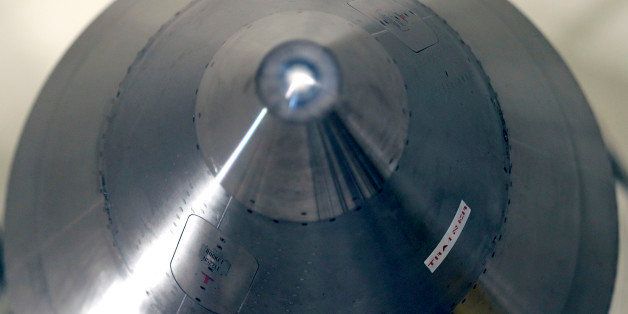
Retired General James Cartwright, who led U.S. Strategic Command, responsible for America's strategic nuclear forces, from 2004 until 2007, recently articulated in an interview that in order to safeguard American Minuteman III intercontinental ballistic missiles (ICBMs) from the threat of cyber-attack, the United States should "de-alert" them, taking them "off-line" so that rather than being prepared to be launched at a moment's notice, it would take 24 to 72 hours to get the missiles ready for operation. General Cartwright served as the lead author for a report issued last month by the Global Zero Commission favoring a gradual "de-alerting" by both the U.S. and Russia of their respective missile forces. But "de-alerting" American (and Russian) ICBMs only side-steps the real question at hand: what is the mission of these missiles to begin with, and are they still needed today?
The Minuteman force has, for more than five decades, stood watch as the mainstay of American nuclear deterrence against the threat posed by hostile nuclear weapons. There were once 1,000 Minuteman missiles based in heavily reinforced underground silos scattered across the northern plains states. At present, there are 450 Minuteman III missiles deployed at three bases in North Dakota, Montana and Wyoming, with that number soon scheduled to be pared down to 400. The Minuteman III of today has little in common with the one that entered service in the 1970's. Significant service life extension programs, costing billions of dollars, have made the Minuteman III viable as a weapons system through 2030, at which time it will need to be replaced. But the Cold War that spawned the Minuteman III is long gone, and with it the need for the United States to maintain an aging fleet of missiles designed to survive a surprise Soviet nuclear attack. The costs of maintaining this relic of the Cold War is too great, and the benefit of retaining it too small.
But building a new missile, like extending the life of an old one, does not come cheap. The Congressional Budget Office has estimated the cost for such an enterprise to be $10 billion spread out between 2014 and 2023. A RAND study predicts a higher range, between $60 billion and $219 billion over a similar time frame. In this day and age of budget austerity, where painful decisions are being made about overall defense force structure, spending this kind of money on a missile system whose mission ended two decades ago is the height of fiscal irresponsibility.
The Minuteman missile was once a critical component of a so-called nuclear Triad composed of land-based ICBMs, nuclear-armed bombers, and submarine-launched ballistic missiles. The value of the Minuteman III to the Triad today centers on the fact that any potential enemy would have to employ hundreds, if not thousands, of nuclear weapons to neutralize it - in short, the Minuteman III exists to serve as a nuclear sump in a world where the risk of massive nuclear attack is slim to none. It is this sort of mind-numbing reality that has led to professional atrophy within the ranks of the US Air Force personnel who man the Minuteman III launch control centers, resulting in flagging morale, lax accountability and cheating scandals.
Nuclear deterrence today is not what it was thirty years ago. The Minuteman's raison d'être was always survivability against a Soviet nuclear attack. In the post-Soviet era, Russia has emerged as the preeminent nuclear challenger to the United States. But the Russian strategic nuclear force is but a shadow of its Soviet predecessor. The threat of a Russian nuclear surprise attack today is minimal, and ably deterred by the US Navy's Trident submarine missile force. Furthermore, the inability of the Minuteman III to respond to anything but a massive nuclear attack further reduces its viability as a weapon system capable of implementing the nuclear strategy of the United States today, where quick-reaction, short-duration nuclear contingencies favor the kind of operational flexibility offered by manned bombers and submarines.
Rather than the force of stability it once was, the Minuteman III has become a destabilizing presence -- any use of the missile, whether against North Korea, Iran or other rogue state or non-state players, would likely trigger a "launch on detect" response from Russia or China (or both). And its inherent first-strike capability has bred new generations of Russian and Chinese missiles designed solely to target the Minuteman III in its silos, increasing the possibility of inadvertent nuclear conflict rather than diminishing it.
The inescapable fact is that the Minuteman III today is a missile without a mission whose continued operational deployment represents neither sound military doctrine nor responsible fiscal policy -- whether or not the missiles are "de-alerted." The realities associated with current and projected defense expenditures dictate that eventually the Minuteman III will find its way to the budgetary chopping block. It would be better for all involved that this decision be made now, before many billions of dollars are needlessly expended on a weapons system with no viable future. America's national security deserves nothing less.
